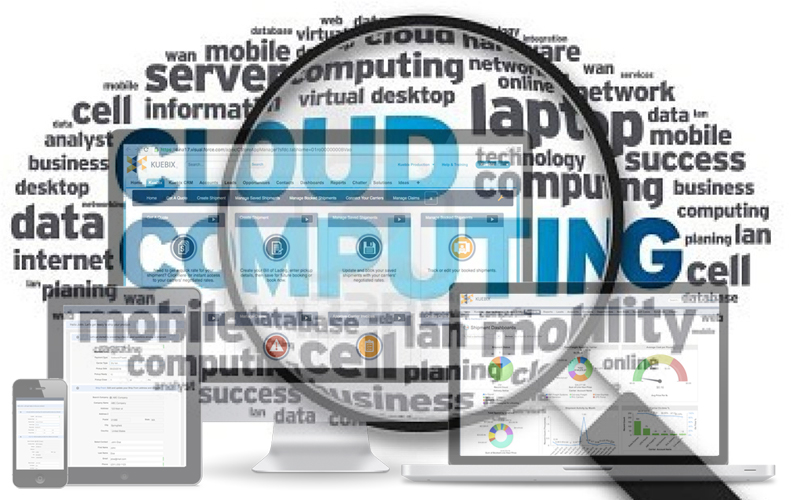The needs of shippers struggling to replace manual processes with automation drove widespread developments of new products, services, and third parties.
Most of these used different approaches for addressing the huge need for efficiency in supply chains.
Meanwhile, the maturity of cloud computing was driving changes across industries and was just beginning to gain traction in logistics.
The lineup of options for shippers looking to improve their logistics operations included on-site system vendors, services from 3rd party logistics providers, and a shallow pool of companies looking to leverage the software-as-a-service model and approach to locating system intelligence.
Word from Above
But what lead to cold sweats for shippers was all the best practice and success stories that the tech trades and even the business media were running.
They featured pioneering companies that had implemented a solution to cure their shipping ills and were said to be on the leading edge of technology use for business gain.
That started the deluge of direct questions from C-level executives.
Are we checking out TMSs? Is this something for us? Can we save money? Why haven’t we done this? C-level execs started believing that their companies could quickly turn their freight shipping into a profit center from a cost center.
It didn’t matter that the price for a TMS was too high or that many of the options covered one aspect of shipping but not many others.
TMS Affordability?
You’d think for sure that a growing group of TMS options would benefit all shippers desperately seeking freight intelligence.
The reality was that TMSs were still not accessible to most businesses in the U.S. The have-nots could find affordable freight handling options, but that meant paying a third party to handle their freight shipping function.
For most, price as in the Total cost of ownership (TCO) was the single largest impediment to implementing a system that would enable logistics professionals to truly manage their freight transportation.
Isn’t it ironic that the sticker price of TMS options and alternative is what was keeping the have-nots from cutting costs and generating new revenue?
Clear Forecast
With the maturity of the cloud, it became clear that locating a TMS software product on a platform in the network and sold as-a-(monthly)-service would break down the many barriers to implementation that so many businesses of all sizes were up against.
This opportunity sure got the attention of shippers who had all but given up on an on-site TMS and wanted something that was both flexible in architecture and easier to cost justify to their bosses.
An Easier Sell
Many enterprise freight shippers moved from controlled freight chaos to the cloud and found that advances in platform technology and automation from TMS software made for easier installation and a faster return on investment.
But while a growing mass of businesses were putting cloud-based TMSs to the test – and turning a cost center into a profit center, SMBs, which I believe make up over 90% of all U.S. businesses, still couldn’t justify a TMS spend. Some outsourced their operations to 3PLs. Others were stuck with their inefficient status quo.
Believe me, whether you’re a kid or a shipping professional nothing’s worse than watching someone else get, enjoy (and profit from), something great that you can’t have.
In the final installment of this three-part series, I’ll explain how important changes in the evolution of the TMS will define the future of freight shipping. Thanks for staying tuned!
Editors Note: This is the second in a three-part series that tracks the evolution of the TMS from the late 1990s to today. In last week’s piece, I discussed the emergence of the TMS. Next week I’ll discuss the future.
Part I Transport Management Systems for Everyone? Existence in the Shippers Slow Lane
Part II Transportation Management System Options Proliferate, But Not for All
Part III The Future of Freight: Why We Launched a Free Transportation Management System
Related Resources
The Complete Buyer’s Guide to Transportation Management Systems
There is almost no limit to how a Transportation Management System can benefit your unique supply chain, but the key to success is finding the right one for your goals, so, before selecting a TMS, use the 12 questions in this buyer’s guide to find the best solution for your company. Download Now!
Effectively Managing Big Data in Your Supply Chain
In this white paper, we’ll explain what the term “big data” means to the typical supply chain, introduce effective strategies for managing and leveraging that data, show how one grocer is using predictive analytics to harness its own big data, and explain the “first steps” that companies need to take down the path to effective management of their big data. Download Now!
More Resources from Kuebix
Article topics
Email Sign Up





















